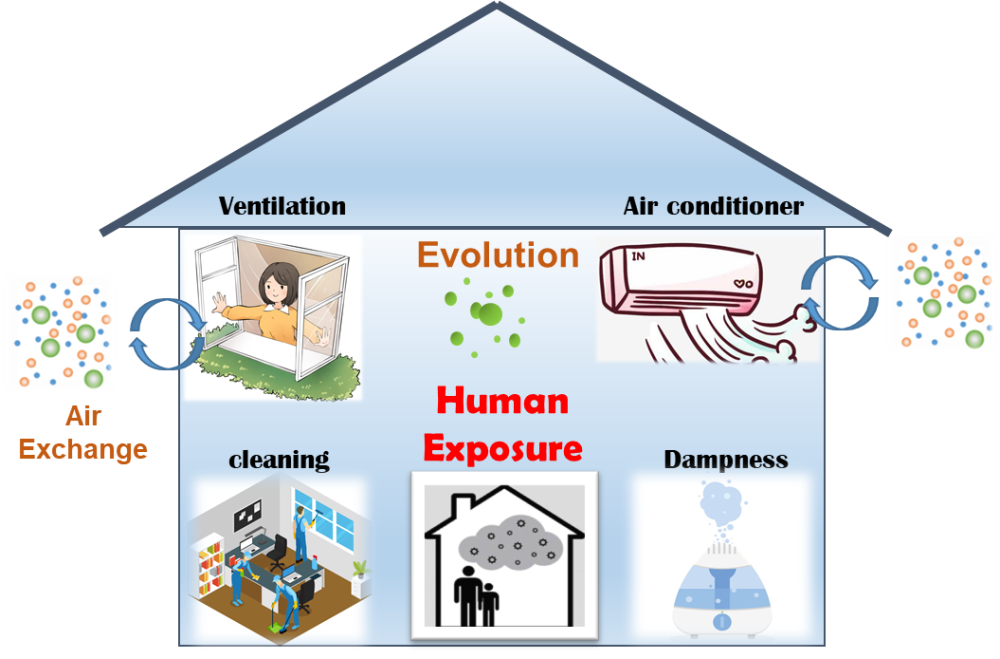Investigation of PM2.5 in Students' Office Helps Better Understand the Link between Indoor and Outdoor Air Quality
Date:2021-05-06
People spend about 80-90% of their time indoors, and graduate students of academic institutes could spend up to 15 hours per day in their offices. Compared to ourdoor air quality, the air quality of the office is more relevant to their health. Therefore, understanding the levels, sources and evolution of particulate matter (PM) indoors is of great importance for the accurate evaluation of the students' health risks to aerosol exposure.

Sources and evolution of particulate matter in the indoor environment. (Image by LI Junyao)
Professor SUN Yele and his team at the CAS Institute of Atmospheric Physics deployed a time-of-flight aerosol chemical speciation monitor (ToF-ACSM) to measure time series and mass spectra of non-refractory species in a typical academic office located at the Institute of Atmospheric Physics. The concentration and chemical composition of indoor PM2.5 were measured for one month along with simultaneous measurements outdoors. They also performed the open-close window and the dampness experiments in order to figure out the mechanism of indoor/outdoor air exchange, and the influence of increased humidity on the indoor PM2.5.
They found that the indoor aerosol species are primarily from outdoor air exchange. "The indoor and outdoor variation trends are similar for most of aerosol species," said Prof. SUN, "However, the chemical compositions of PM2.5 are different. The concentration of organic aerosol from fossil fuel combustion and ammonium nitrate decreases because they evaporate or turn from particle to gas upon transport indoors when the indoor temperature is much higher than outside in winter."
It is often believed that opening windows to ventilate can improve the indoor air quality. However, according to this newly published study, the PM mass concentration outdoors is significantly higher than that in the office. Elevated natural ventilation will increase PM exposure indoors instead, and this increased exposure might be prolonged when outdoor PM got cleared up. "So it's not a good idea to open windows when the air quality is not good outdoors." Said Prof. SUN.
The team also investigated the effect of air humidifiers, which are widely used to increase the indoor humidity. Prof. SUN said, "The increase of indoor relative humidity could lead to a significant increase in PM2.5 mass concentration, especially for organic aerosol. The increase is likely due to the partitioning of hygroscopic organic species from gas phase to particle phase in indoor air."
These findings, published in Indoor Air, highlight the important role of human activities on indoor air quality and the corresponding consequences of human health threats.
"Better understanding of the links between indoor and outdoor air quality will be needed in the future, as well as a more quantitative assessment of human exposure risks indoors." said SUN.
Reference:
Li, J., Xu, W., Li, Z., Duan, M., Ouyang, B., Zhou, S., Lei, L., He, Y., Sun, J., Wang, Z., Du, L., Sun, Y., Real-time Characterization of Aerosol Particle Composition, Sources in an Office and Influences of Increased Ventilation and Humidity, Indoor Air, https://doi.org/10.1111/ina.12838, 2021.
Media contact: Ms. LIN Zheng, jennylin@mail.iap.ac.cn
